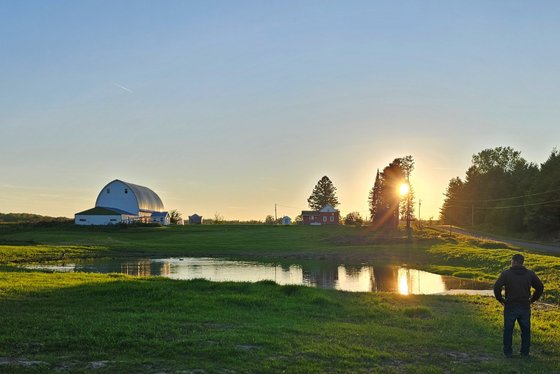DNR Biologist Finds “Holy Grail” Of Rare Plants In State Natural Area
MADISON, Wis. – A Wisconsin Department of Natural Resources (DNR) conservation biologist has found the “holy grail” of a rare plant in Wisconsin: A green violet long thought gone from the state, but growing by the hundreds in a State Natural Area (SNA) in west central Wisconsin.
The species (Hybanthus concolor) was last documented in Wisconsin in 1958 when it was collected from a site in Grant County. That site was severely impacted by grazing and the species was thought to no longer grow in the state.
This isn’t the first rare plant finding within Wisconsin’s State Natural Areas – 75% of wildlife species listed in Wisconsin as threatened or endangered, and 90% of state-listed plants are supported on State Natural Areas. These sites, owned both by the DNR and more than 50 partners, represent Wisconsin’s best native forests, wetlands, prairies and geological and archaeological sites. Their primary purpose is to maintain this natural heritage for future generations.
O’Connor’s discovery also underscores the importance of having experts conduct “biotic inventory surveys” to document the different rare species on state-owned lands and assess how the natural community they are part of is faring.
Natural communities are defined by the soils, geology, plants and animals that evolved together to form different types of prairies, wetlands and forests. Wisconsin has more than 100 of these distinct communities, some of which are globally rare. The state legislature created the State Natural Areas program to conserve examples of these communities 70 years ago.
The DNR uses the inventory survey information to inform master plans determining how to manage properties and prioritize the attention they receive.
Green Violets At A Glance
- Green violets are native to the eastern United States. Wisconsin is at the very northern edge of the green violet range. Across its range, green violet is limited to rich mesic forests on limestone soil. Many of these sites have been lost to logging, grazing and invasion by weeds like garlic mustard and honeysuckle.
- Most violets have white, yellow or purple petals and green sepals, but green violet has much less showy flowers. The plant’s scientific name, Hybanthus concolor, refers to the petals and sepals being the same color (green). The word “concolor” is Latin for “same color.”
- Like other violets, green violet has a gelatinous substance, called an elaiosome, attached to its seeds. The elaiosome is rich in fats and proteins, which attract ants. The ants bring the elaiosomes back to their nests to eat, and as they move them around, distribute the violet seeds.
To learn more about State Natural Areas and to find one near you, click here.
NOTE: This press release was submitted to Urban Milwaukee and was not written by an Urban Milwaukee writer. While it is believed to be reliable, Urban Milwaukee does not guarantee its accuracy or completeness.






















